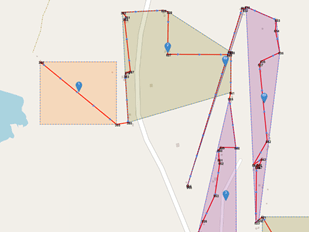Investments in global malaria elimination and control currently total an estimated $2.7 billion, well below the projected annual need of $6.5 billion. With such a large funding gap, any at-scale efficiency improvements to existing elimination and control processes help stretch available resources.

Hugh Sturrock, IGHS faculty and lead researcher for DiSARM.
Public health interventions have been increasingly adopting the use of technology in the fight to eliminate infectious diseases. In the field of global health, UCSF has been an early adopter in its use of technology to gain efficiencies in population-level interventions. UCSF’s incredible diversity in skills and implementation research capabilities were an important motivator for me to join the master’s program offered at the Institute for Global Health Sciences.
The world has been fighting malaria in a concerted way since the 1950s. Malaria disproportionately affects people living in poverty-stricken areas who are unable to afford the necessary prevention or treatment measures. Nearly half the world’s population is at risk for malaria and, despite being a treatable condition, it claims the lives of about 430,000 children every year. One key tactic to fighting malaria is to be able to predict its spread in order to concentrate efforts to arrest the trend.
The Disease Surveillance and Risk Monitoring (DiSARM) application helps predict malaria spread using machine learning, a method of data analysis that automates the prediction of malaria risk, to aid countries with on-the-ground operational decision-making related to malaria intervention strategies. DiSARM targets malaria elimination efforts in the predicted high-risk malaria regions by using indoor residual spraying, a technique that involves the application of mosquito insecticide by trained personnel onto walls of residential houses.

Swaziland and the optimized travel route for insecticide
application.
My master’s capstone study evaluates ways to minimize the total distance that personnel must travel between residences during insecticide application. Determining the optimum travel routes from structure to structure and presenting the users of DiSARM with an optimized cluster of residences to service will save resources. My initial findings show that optimizing travel routes results in approximately 15% less driving distance, with a corresponding savings in per-kilometer driving costs.
The next step is to validate the findings from our secondary data analysis in the field using the enhanced technical expertise developed by the DiSARM project. Given that malaria elimination projects worldwide are expensive operations, the project hopes to develop solutions that increase the efficiency of operations to do more with limited resources.
Perfecting this technology provides for opportunities beyond just malaria elimination. The next frontier of tools to combat diseases worldwide is at the intersection of technology, machine learning and healthcare, with UCSF’s Institute for Global Health Sciences among those leading the charge. Being part of this institution has been a valuable learning experience.